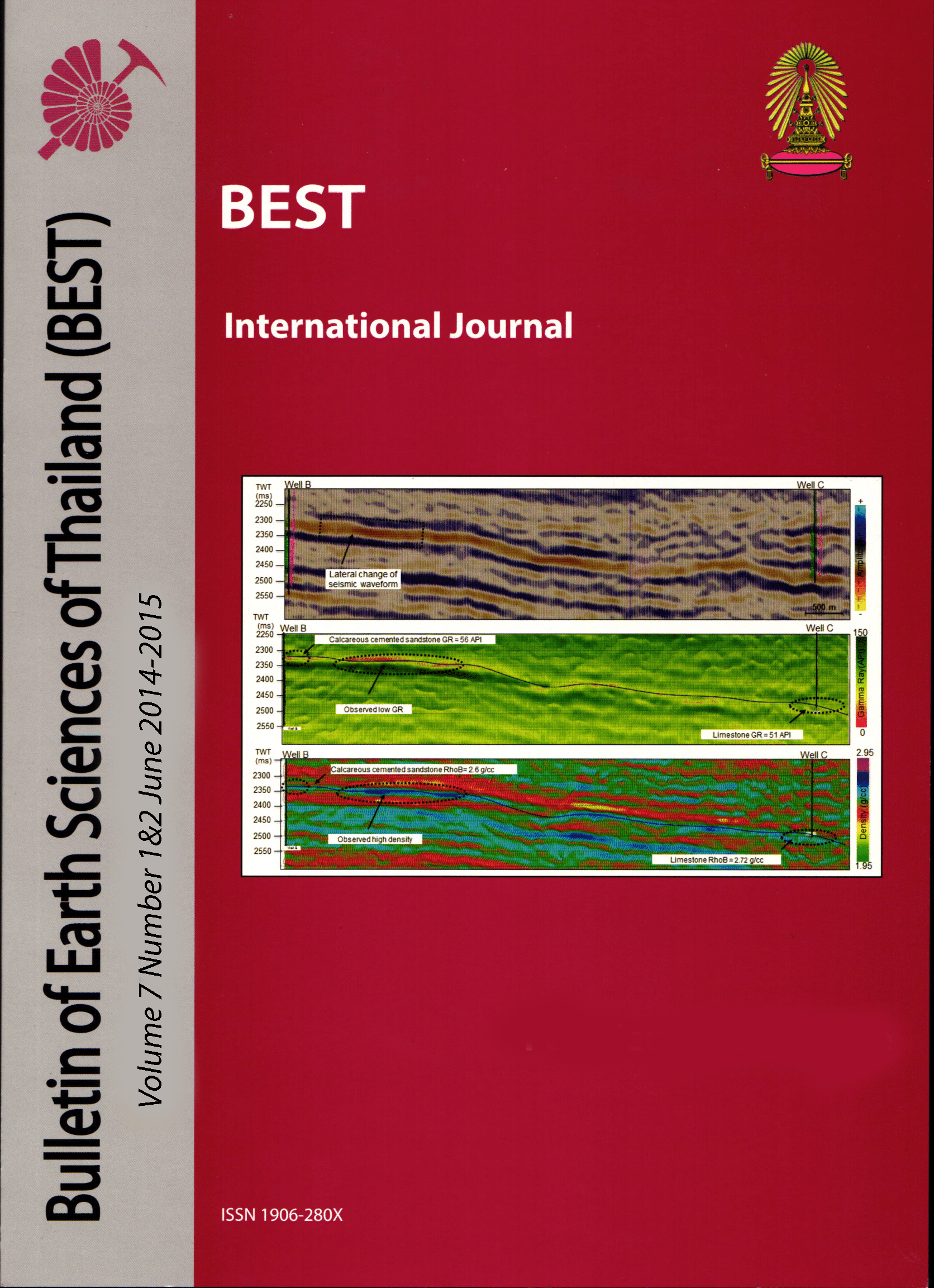An integrated isotope-based fluid evolution and rock typing study, based on well cuttings and outcrop in Permian and Triassic successions of central and north east Thailand.
Main Article Content
Abstract
An isotope-based (18O and 13C) study was used to describe how rock-fluid interaction is impacted by structural and diagenetic processes in a succession of Permian platform carbonate and
Triassic siliciclastics and volcanics in central and NE Thailand. Previously completed isotope studies have described fluid evolution resulting from structural and diagenetic processes within outcrops of Permian platform carbonates. This study is the first to extend this isotope-based
fluid evolution application from outcrop analog to the un-cored well bore. Permian platform carbonate outcrops and Triassic non-marine clastic outcrops were used as analogs for the subsurface, in a well that had penetrated a well-known Triassic volcanic formation, a shaley carbonate, and then an extremely hard unnamed “conglomerate” section. The mudlog interpretation for this well placed its base in a subthrust Permian sequence; however, analysis of the stable isotope spread in the lower part of this well indicates a C-O isotope plotfield that is not usually associated with subthrust Permian carbonates in Thailand. This study aimed to explain this anomaly and expanded the use of stable isotope analysis via determinations on selected well cutting samples and by examining the isotope signatures of shalier, as yet under-studied “off-platform’ Permian carbonates.
Article Details

This work is licensed under a Creative Commons Attribution-NonCommercial-NoDerivatives 4.0 International License.
Copyright © 2008 Department of Geology, Faculty of Science, Chulalongkorn University. Parts of an article can be photocopied or reproduced without prior written permission from the author(s), but due acknowledgments should be stated or cited accordingly.
References
Allègre, C. J., 2008, Isotope geology: Cambridge, Cambridge University Press.
El Tabakh, M., and Cherdsak Utha-Aroon, 1998, Evolution of a Permian carbonate platform to siliciclastic basin: Indochina Plate, Thailand: Sedimentary Geology, v. 121.1, p. 97-119.
Hitzman, M. W., 1999, Routine staining of drill core to determine carbonate mineralogy and distinguish carbonate alteration textures: Mineralium Deposita, v. 34.8, p. 794-798.
Ludwig, J., 2014, An integrated isotope-based fluid evolution and rock typing study, based on well cuttings and outcrop in Permian and Triassic successions of central and north east Thailand, MSc Thesis, Petroleum Geoscience Program, Department of Geology, Chulalongkorn University, Bangkok.
Morley, C. K., P. Ampaiwan, S. Thanudamrong, N. Kuenphan, and J. Warren, 2013, Development of the Khao Khwang Fold and Thrust Belt: Implications for the geodynamic setting of Thailand and Cambodia during the Indosinian Orogeny: Journal of Asian Earth Sciences, v. 62, p. 705-719..
Pagocho, F., 2014, An isotopic and sedimentological study of deepwater Permian carbonates and mudstones in Lopburi area, central Thailand, MSc Thesis, Petroleum Geoscience Program, Department of Geology, Chulalongkorn University, Bangkok.
Ridd, M. F., Andrew J. Barber, and Michael J. Crow, eds. , 2011, The Geology of Thailand: Geological Society of London.
Warren, J., C. Morley, T. Charoentitirat, I. Cartwright, P. Ampaiwan, P. Khositchaisri, M. Mirzaloo, and J. Yingyuen, 2014, Structural and fluid evolution of Saraburi Group sedimentary carbonates, central Thailand: A tectonically driven fluid system: Marine and Petroleum Geology, v. 55, p. 100-121.


